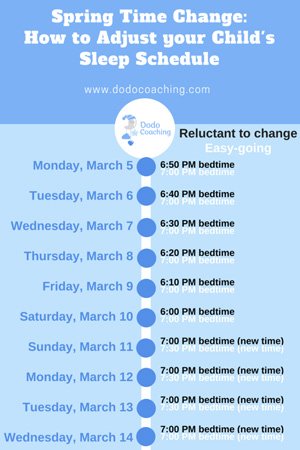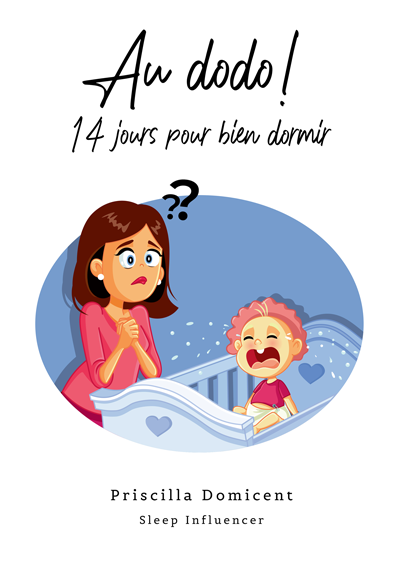If you’re tired of winter’s dark afternoons, hold on just a little while longer. Summer is on the way! On Sunday, March 11, 2018, most Americans will set their clocks forward an hour, as daylight saving time begins (in Europe, this occurs on Sunday, March 25). The change to summer time will in fact take place on the night of March 10 to 11. At 2:00 AM it will in fact be 3:00 AM. The switch means sunrise and sunset are about an hour later on March 11 than the day before.
How does time change affect sleep
If you always feel confused about time change, keep the following in mind: “Spring Forward & Fall Back”. This expression triggers your memory to set your clock forward 1 hour in the spring and 1 hour back in the fall.
In the fall, the situation is quite simple and does not really cause problems. We can enjoy an hour more sleep. If we forget to make the time change, the next day we are simply an hour ahead of everyone. We have little chance to miss our flight or an appointment.
When spring gets closer, we “lose” an hour of sleep. In fact, it has been observed that this change causes more accidents of all kinds simply because people lack sleep. Our bodies get used to eating and sleeping at certain times and might need a couple days to make up the difference. Some of us tend to get back to work on the following Monday, more tired than usual.
When it comes to children, the adaptation could seem to be happening more smoothly in the mornings. Why? Because a child who is used to waking up at 6:00 AM will be more likely to wake up at 7:00 AM on March 11, 2018. However, bedtime could become more challenging after the time change. Children used to a 7:00 PM bedtime would normally have to start their night an hour earlier. However, it is possible that they would not be willing to go to bed so early. So, your kid might wake early, sleep late or find it hard to fall asleep at night. These consequences can be expected but don’t worry! There are ways to prevent potential troubles following the time change.

10 daylight saving sleep tips
Some parents believe that it is indispensable to start one or two weeks before the time change occurs to allow a smooth transition. However, so much anticipation is not always needed. To help you prepare the best way possible to the time change, take into account the following tips.
Sleep Tip #1: If your child has the tendency to be reluctant to routine changes, you can slowly shift the bedtime to an earlier time in 10 to 15 minutes increments.This will help her to adjust in advance and will ease the transition. Should your child be easy-going with life changes and flexible, you can apply a more “cold-turkey-like” method. For example, if your child’s usual bedtime is set at 7:00 PM, the transition could occur the following ways.

Sleep Tip #2: Make sure that your child naps long enough during the days prior to the time change so that she won’t be overtired when the change occurs.
Sleep Tip #3: Bring as little as possible changes to the bedtime routine before and after the time change. Consistency is key.
Sleep Tip #4: Do not wake up your child on March 11 on the basis of the winter time. If she was used to wake up at 6:00 AM, she will probably get up around 7:00 AM on that day. Let her wake up spontaneously (it is Sunday after all), but without letting her sleep more than 60 minutes extra (i.e. wake her up at 8:00 AM if needed).
Sleep Tip #5: Use a dramatic wake-up anytime after 6:00 AM (new time) in order to let her understand that her night is definitively over. Open all the curtains, let the sunlight in, sing a little wake-up song, let her have breakfast, etc.
Sleep Tip #6: Get some fresh air on Sunday morning (at least 30 minutes) and expose your child to bright sunlight as much as possible during the following week. Natural light helps our internal clock (for children as well as for adults) adjust to the time change.
Sleep Tip #7: During the day, try to follow as much as possible the ordinary meal and nap schedule (based on the new time). Naps remain essential. A well-rested baby will be easier to put down in the evenings. Avoid any nap prolongation that could push the bedtime to later than 8:00 PM.
Sleep Tip #8: As from March 11, try to put your child to bed at her “regular time” (the new 7:00 PM bedtime is in fact the past 6:00 PM bedtime). If your child hasn’t been through a slow transition during the previous days (see sleep tip #1), be prepared that she may not be tired at bedtime. You could allow her to stay up a bit longer the first couple evenings following the time change (i.e. going to bed at 7:30 PM instead of 7:00 PM, meaning at 6:30 PM instead of 6:00 PM based on the winter time). Keep in mind to be flexible the first nights and look for your child’s natural sleep cues (i.e. eye-rubbing, a lull in activity, fussing or thumb sucking). Put her either to bed at the usual hour or as soon as she shows signs of tiredness. Do not keep her awake after 8:00 PM in order to avoid facing unpleasant consequences of overtiredness.
Sleep Tip #9: Your child’s bedroom should be dark enough at bedtime to make sure that the natural light doesn’t prevent her from falling asleep in the evenings.
Sleep Tip #10: In order to get your child’s body and mind to slow down before falling into the arms of Morpheus, it is extra important to go through her usual bedtime routine. Keep the evening activities very calm, avoid screen time and bright lights that could stimulate her.
So, in practice, every activity should be pushed ahead one hour as from Sunday March 11. In order to make the transition as smooth as possible, be consistent, be patient and follow the usual daily schedule and routine according to the new time (while paying attention to your child’s natural sleep cues).
If you would like to get more information on how to improve the quality and/or the quantity of your child’s sleep (and yours at the same time), do not hesitate to schedule a 15-minute preliminary consultation. It is a totally FREE & NON-BINDING offer!









